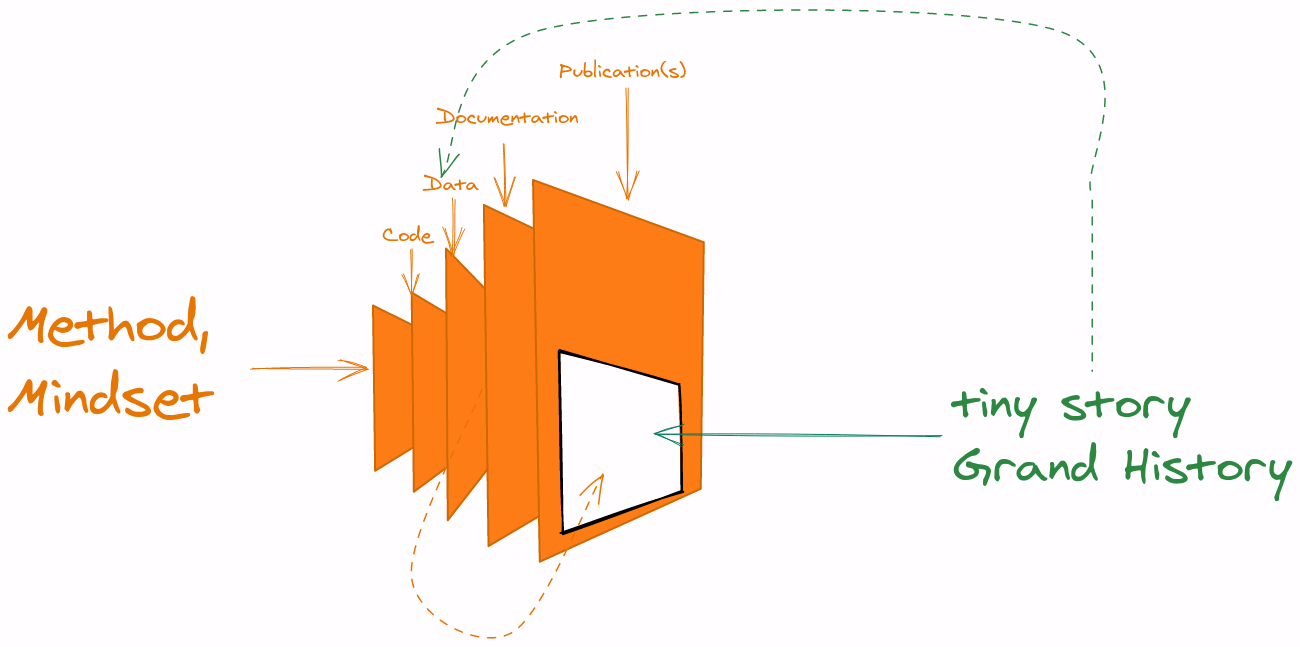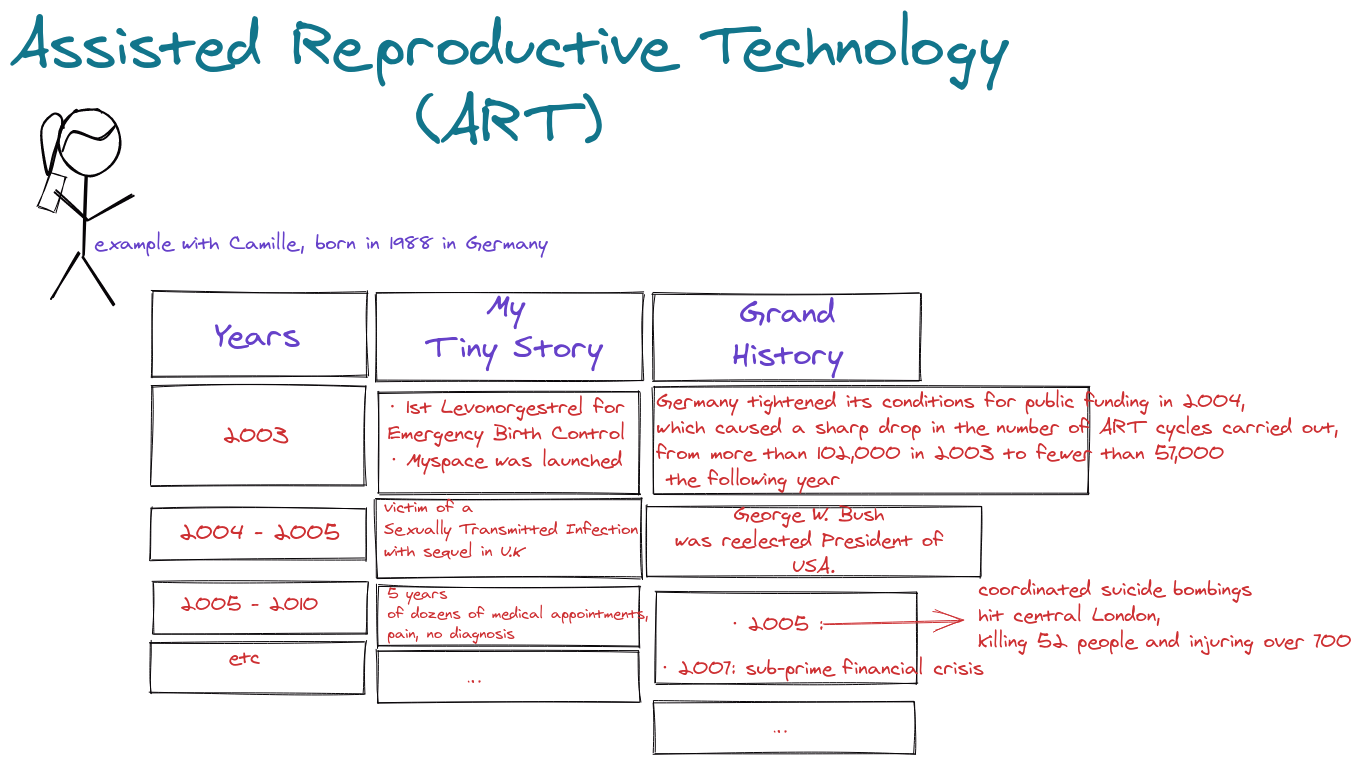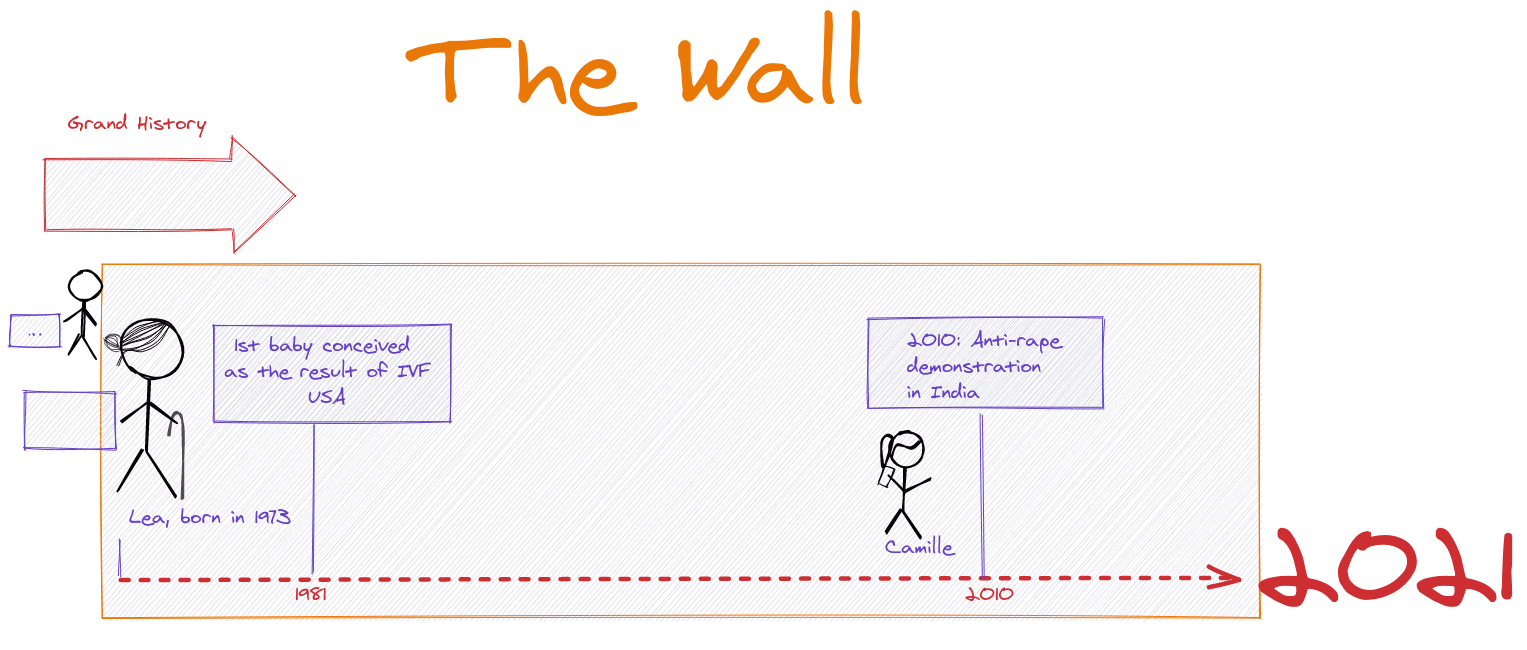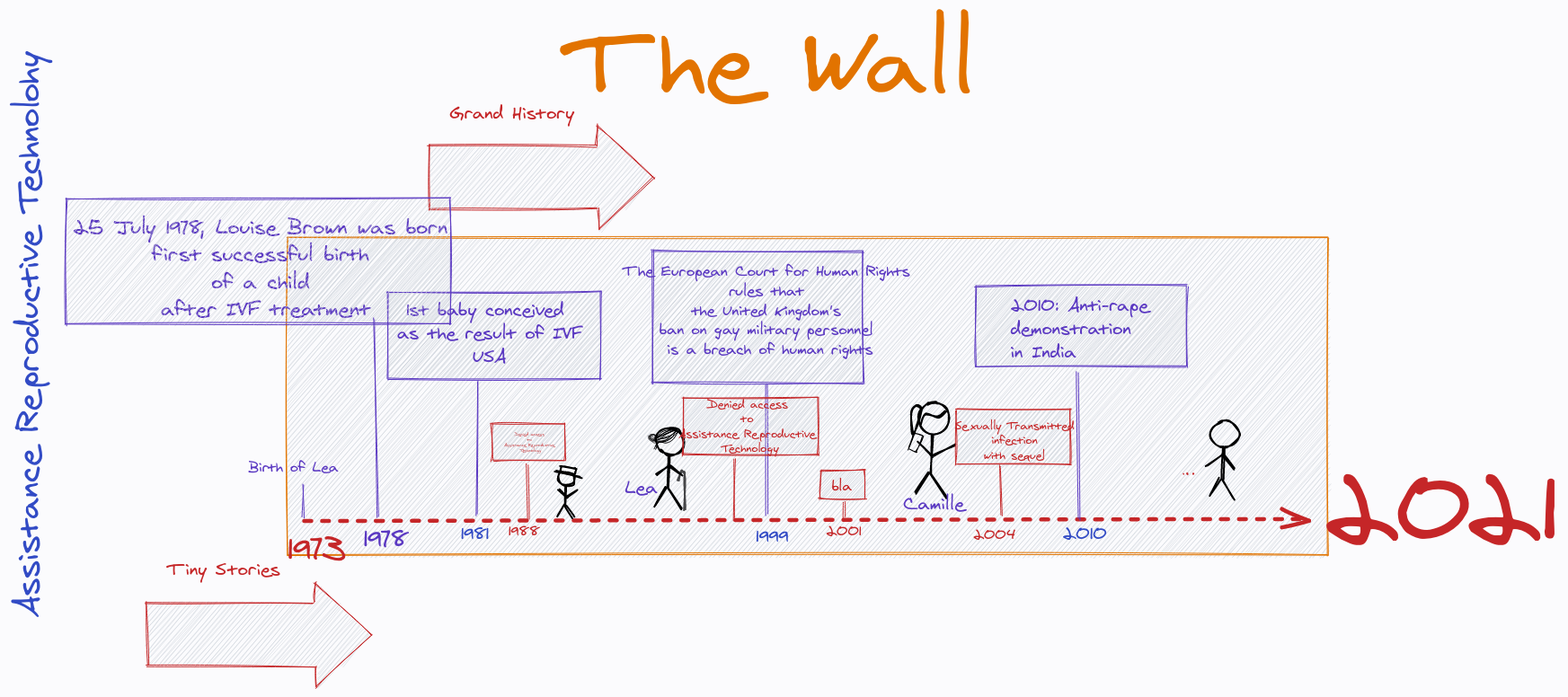Table des matières
tiny story, Grand History (ts,GH)
Collective session based on the method of animation “tiny story,Grand History in public (pdf in fr} popular education to make visible and share questioning on the representations, the transmission of experiences… To question and document differently our own practices to make them evolve.
A method whose origin is attributed to Breton-Catalan en:Ricardo Montserrat
Method for workshops for people who would like to design, facilitate, remix a workshop.
Can also be used for :
- Provide an additional layer of narrative to an investigation
- highlight the experiences of people involved in a crowdsourcing operation (investigation, participatory science, etc.)
- Make visible the experience of people involved in a more significant event (disaster for example - whether they are victims, actors, responsible…)
- To provide a material to give a new support in addition to the graphic and aesthetic presentation of collected evidence or collected data
- etc.
- Duration: 2 to 4 hours in total (sometimes more) with 1 individual hour per participant, number: between 5 and 10 people
- Layout: wall mural or blank table or digital board (e.g. https://excalidraw.com)
- Desire: to share our life stories, the roots of our anger and our commitments, to organize the transmission of our political experiences
- Intention: to defend and share a self-determination and the necessity of the transmission of a repoliticized critical culture
- Preparation: none except to train in life stories
Type de documentation
Cette page est une documentation en guide pratique.
Vous pouvez partager vos connaissances en l’améliorant (comment ?).
Ce page est axée sur les buts, montre comment résoudre un problème spécifique, tout comme une série d’étapes. Elle est semblable à l’acte de cultiver des légumes ou à une recette dans un livre de cuisine
Exemple : Wiki OpenFarm
Répertoire : Les guides pratiques dans ce wiki
Support : Le portail dédié à la documentation et aux codes sources
Method & animation
pre-phase: make it clear
With the idea to empower participant, to give some kind of equity between invisible people and facts by writers of History, and so on and so forth.
Very short: A typical workshop start with a Specific Event or topic to investigate and begin at the birthday of the younger attendee.
We can use wall, pen, papers or web app to drawn the timeline and write and stick events plus explanation
- Explain the context, the idea and the intention
- Ask if there are any problems or uncertainties
- Clearly explain the rules of life together, for example: code of conduct
- Clearly state and display the time frame and the total duration
- Tell, explain and display the theme of the session “tiny story, Grand History”.
- Make the theme of the session clear (e.g. a specific historical event (the beginning of the COVID-19 pandemic) or a collective theme (the rights to Assisted reproductive technology))
1st phase: individual writing time
- 20 to 40 minutes, or even 1 hour
The first step consists of an individual writing instruction to write one's personal, educational and professional story, from birth to the present (45 minutes to 1 hour in a calm environment): “Starting with your year of birth: write down the year, and at least two columns “tiny story” and “Grand History”.
What brought you there? What has been constitutive of your values, your awareness of the world, or has built you as an adult, …. including of course positive or negative events (a failure can give rise to a turning point).
Scop Le pavé
Participants are given personal and individual time to prepare and fill out a table with one line per year.
- The first year can be the year of birth,
- The last one being the current year
- and 3 columns,
- the first one to write the years,
- the second one for the tiny story,
- the third for the Grand History.
The small story means our personal history, the big story, everything else. During this first hour, you will have to find an anecdote for each blank space in the table, which is significant in relation to your presence here in this instruction:
What elements of the tiny story and Grand History have brought you here today?
2nd phase: Sharing
- Around the Grand History ~ 20 to 60 min
It can be current events reported by the media:
- wars, elections, Human Rights, attacks, demonstrations, strikes, sporting events…
- It can also be a film, song, book, etc.
For specific session participation groups (a village or small community), it can be events that may not have national or international significance but have importance to the members concerned.
Note: it can be easy to give many examples to explain the Grand History, this is the part of the instruction that “initially” challenges participants the most. The Grand History is what spontaneously refers to the story we learn at school and which may have put the one and others in difficulty because it is an a priori and that the History taught at school is not sacred.
Year by year, in a chronological manner, the facilitator asks the group to share the events of history that have marked them.
One person is in charge of transferring the events onto a colored visual medium and integrating them into a timeline.
It may be suggested that an event be shared in the following form:
- Context of the History (age, place, emotions felt)
- The event of the History (what happened, where, when, how, how it was felt?)
- The end of the (Hi)story (how it ended, the final feeling, why this (Hi)story marked me?)
Depending on the time, the energy of the group and the balance of the discussions, the facilitator may suggest that certain events be moved forward more quickly. Be careful, these choices are not neutral and must be thought out beforehand according to the initial intentions.
When a participant posts his or her moment in the big story, that person has a short time to tell and explain why he or she chose that moment, keeping the constraint of the story in a collective perspective. A collective note of the story is organized (paper, web pad, etc.)
Each person speaks in turn without an imposed historical chronology.
Challenges :
To embody, with the help of one's memories, situations and people who have made us grow, who have shaped our path, to measure the convergences between the participants and the specificities of each one; to make the link between different contexts of emancipation and to observe the “availability regimes” of those who have helped us to grow. This exercise will also have the merit of proposing a method that privileges testimonies over arguments, thus creating egalitarian positions in the group; finally, this work will have the interest of encouraging inter-knowledge, including between people who believe they know each other.
More information on the method (and a site on which to search (fr)): http://www.scoplepave.org/petite-histoire-grande-histoire
3rd phase : Sharing in common
- Around the tiny stories ~ 20 to 120min
With the same method as phase 2, the participants come to display their tiny stories with :
- explanation of the choice
- associated narrative
- collective notes
4th phase: Wrapping round
Speech or non-speech is free and respected, like an offering. The questions are there to open up possibilities.
At the end of this session, the group is asked to do a round of free speech that answers all or part of the following questions
- How do I feel at the end of this workshop?
- What needs did this workshop meet?
- What did I learn about myself, about the group, from this workshop?
- How does the Grand History nourish our individual experiences?
- And our tiny stories?
- What do they tell about us?
- Do I have stories I want to share beyond this circle?




